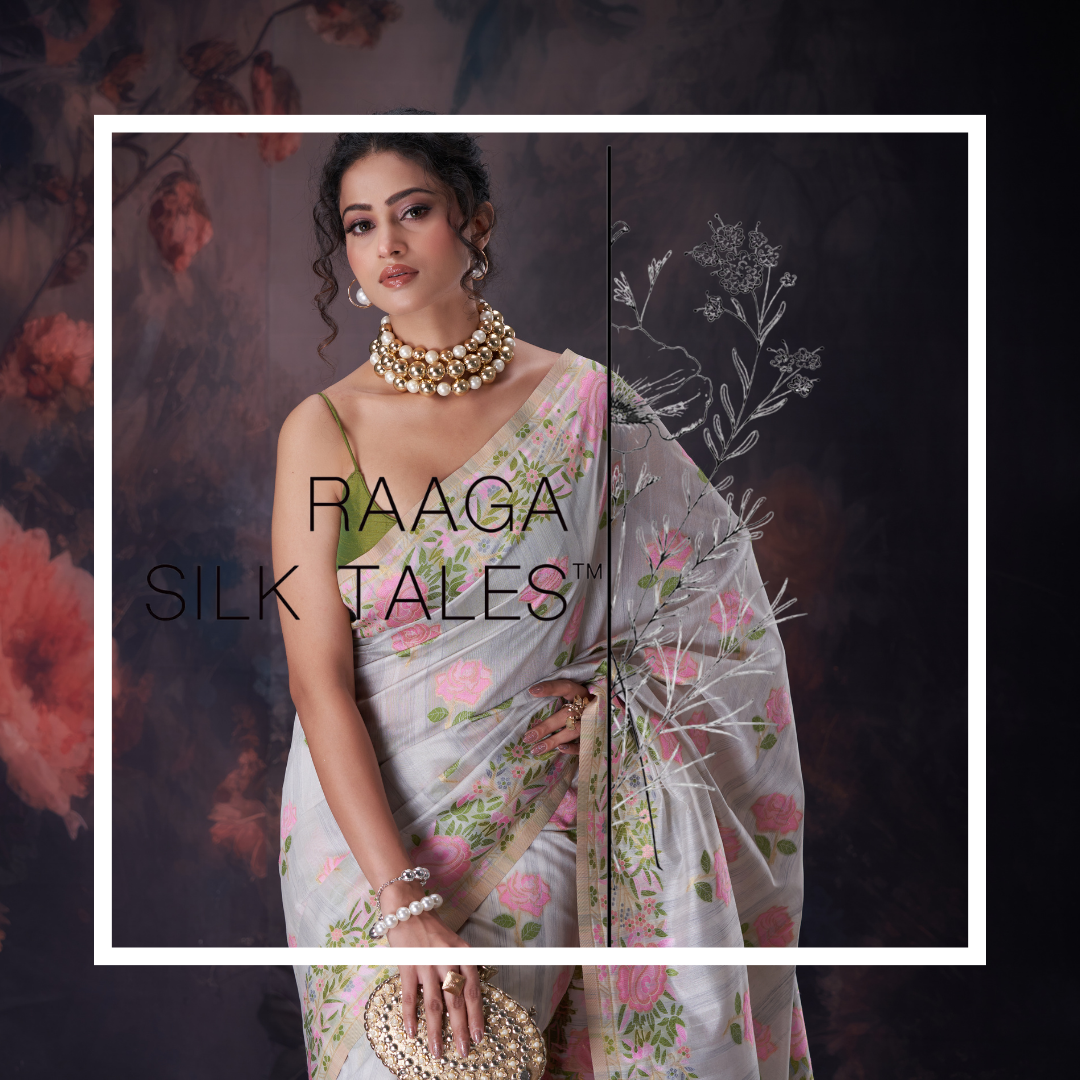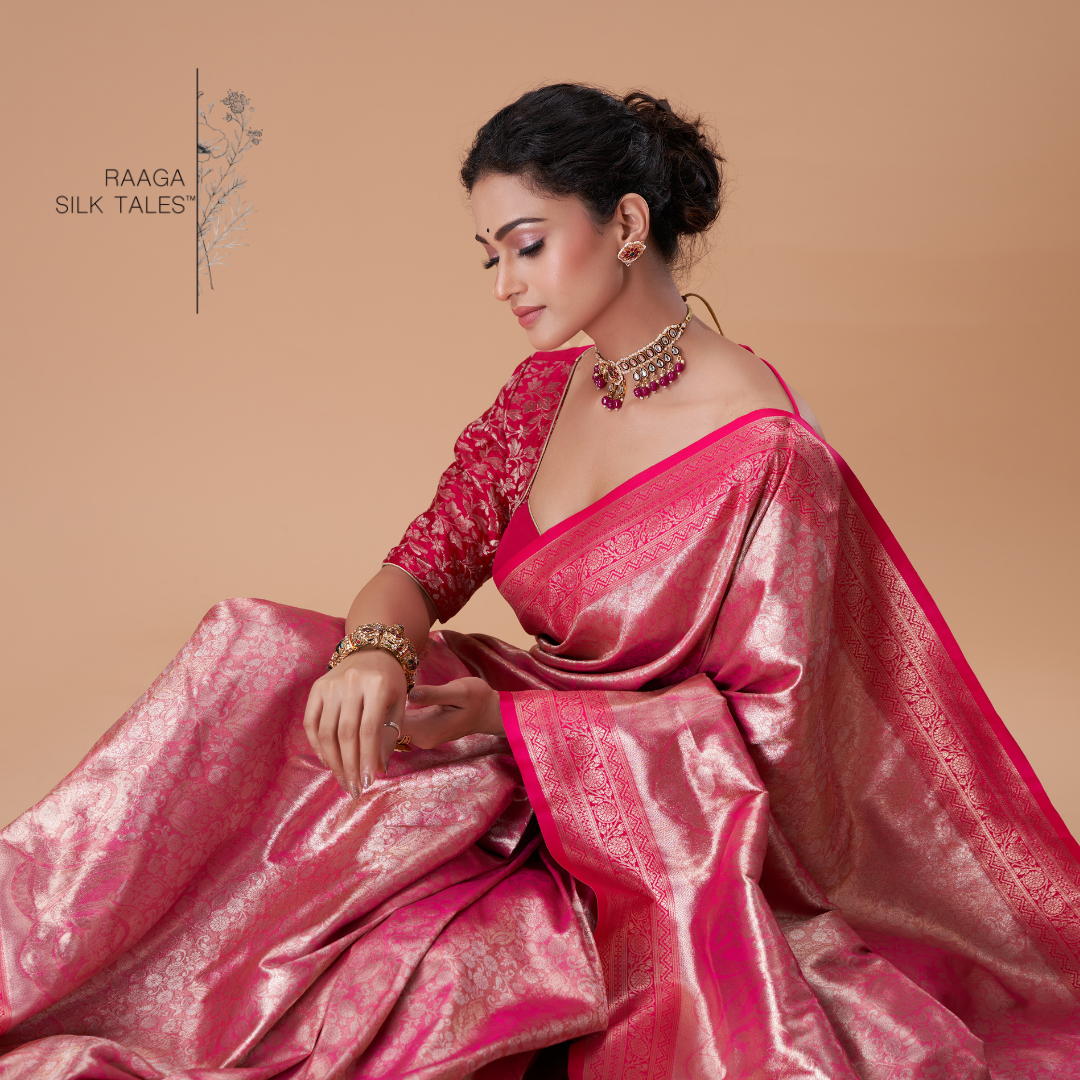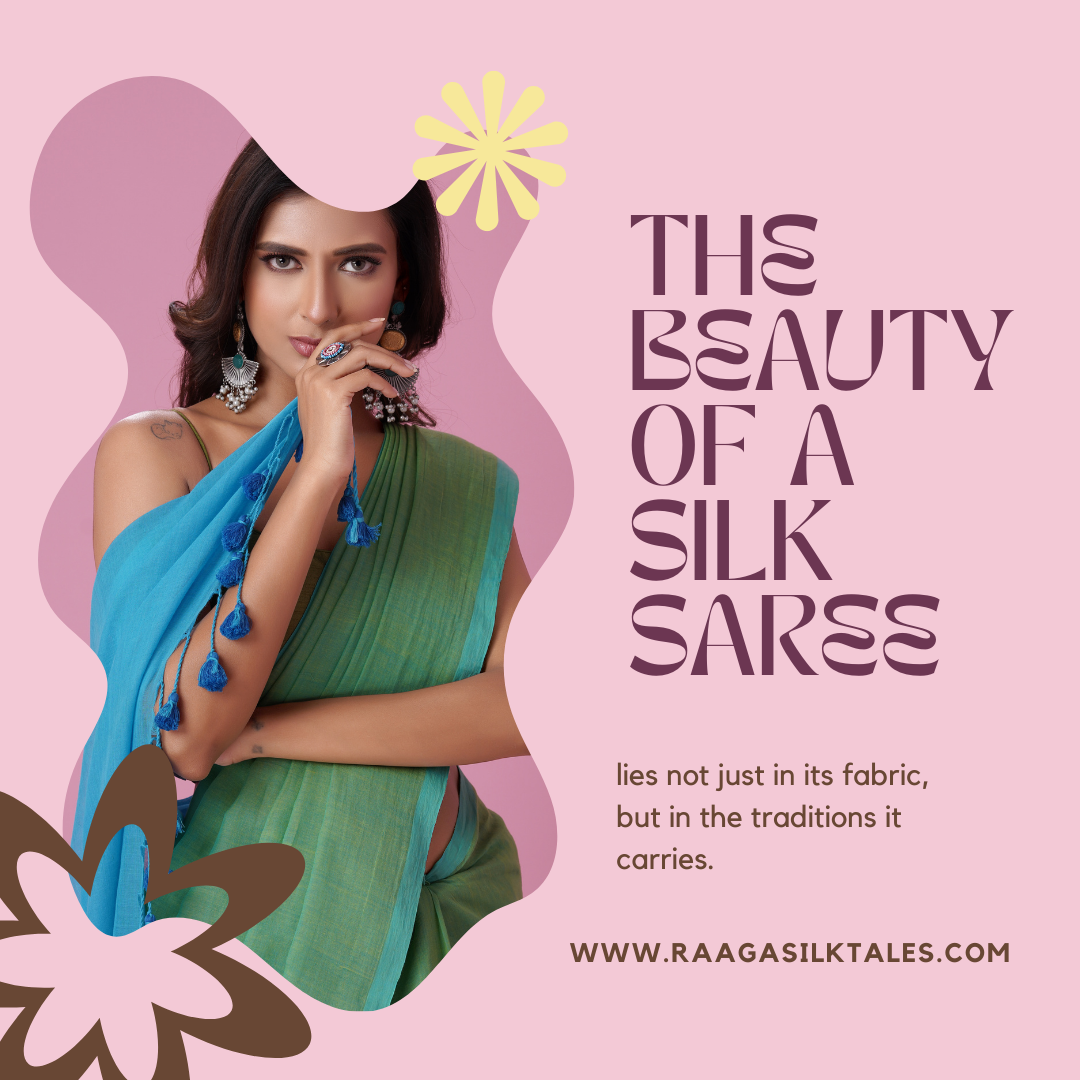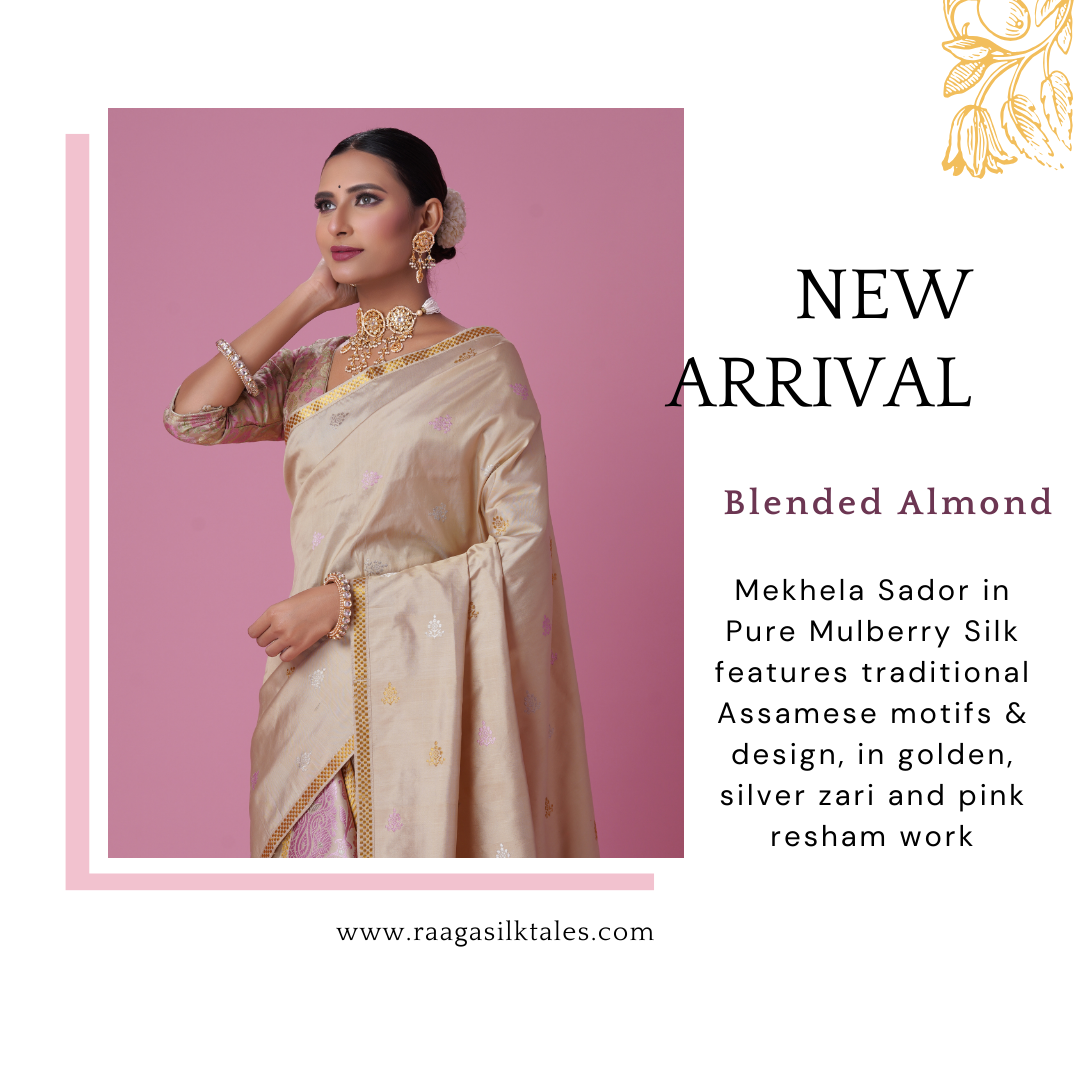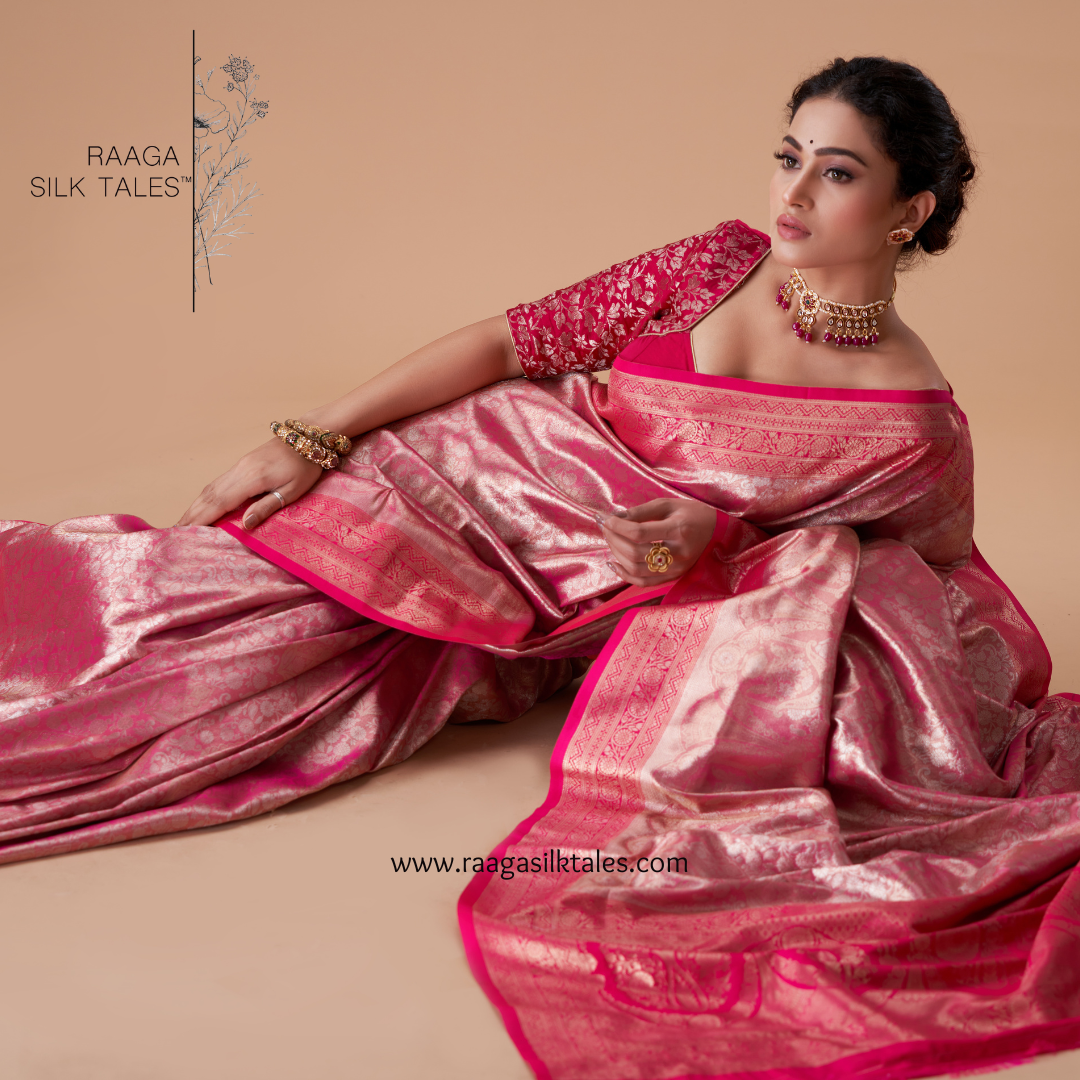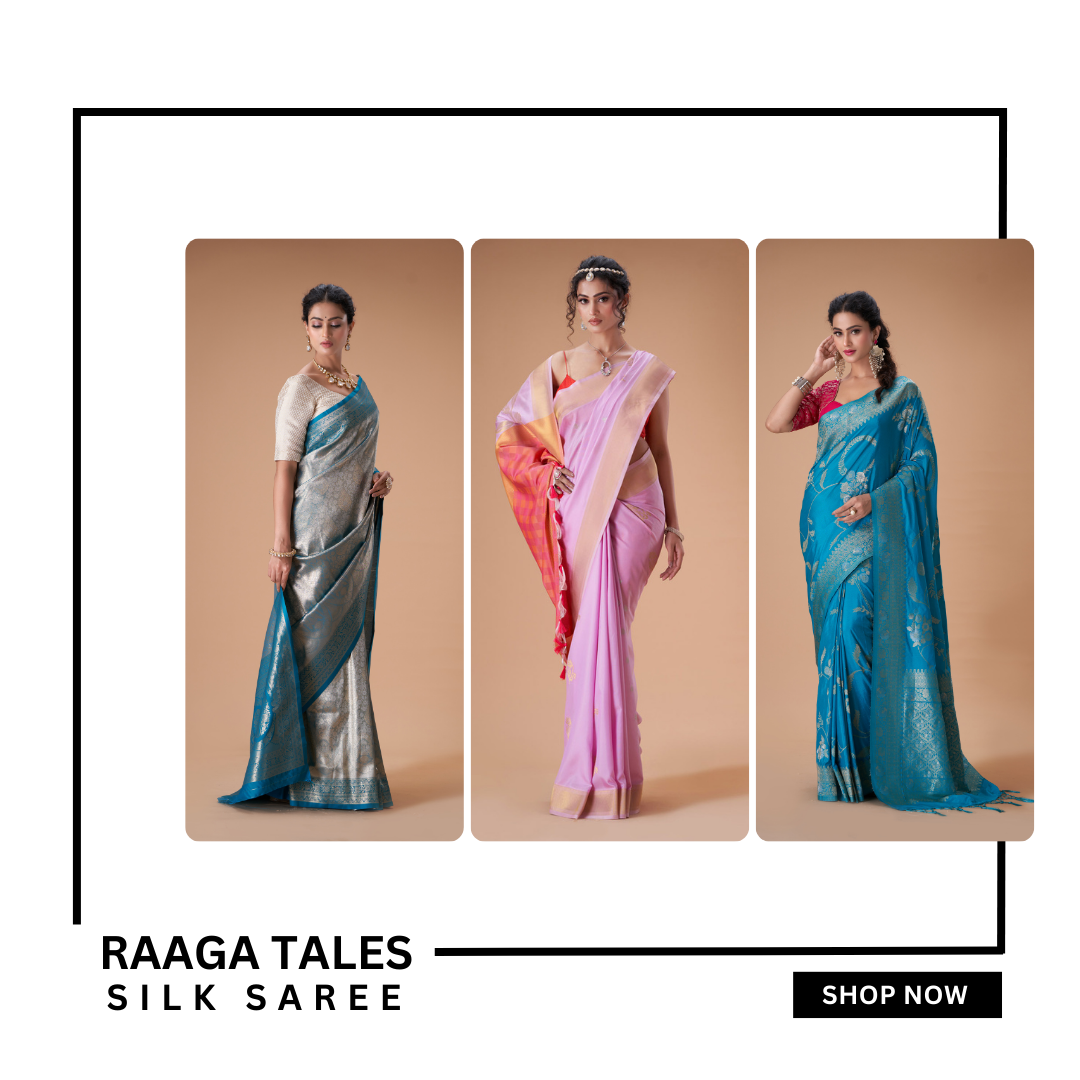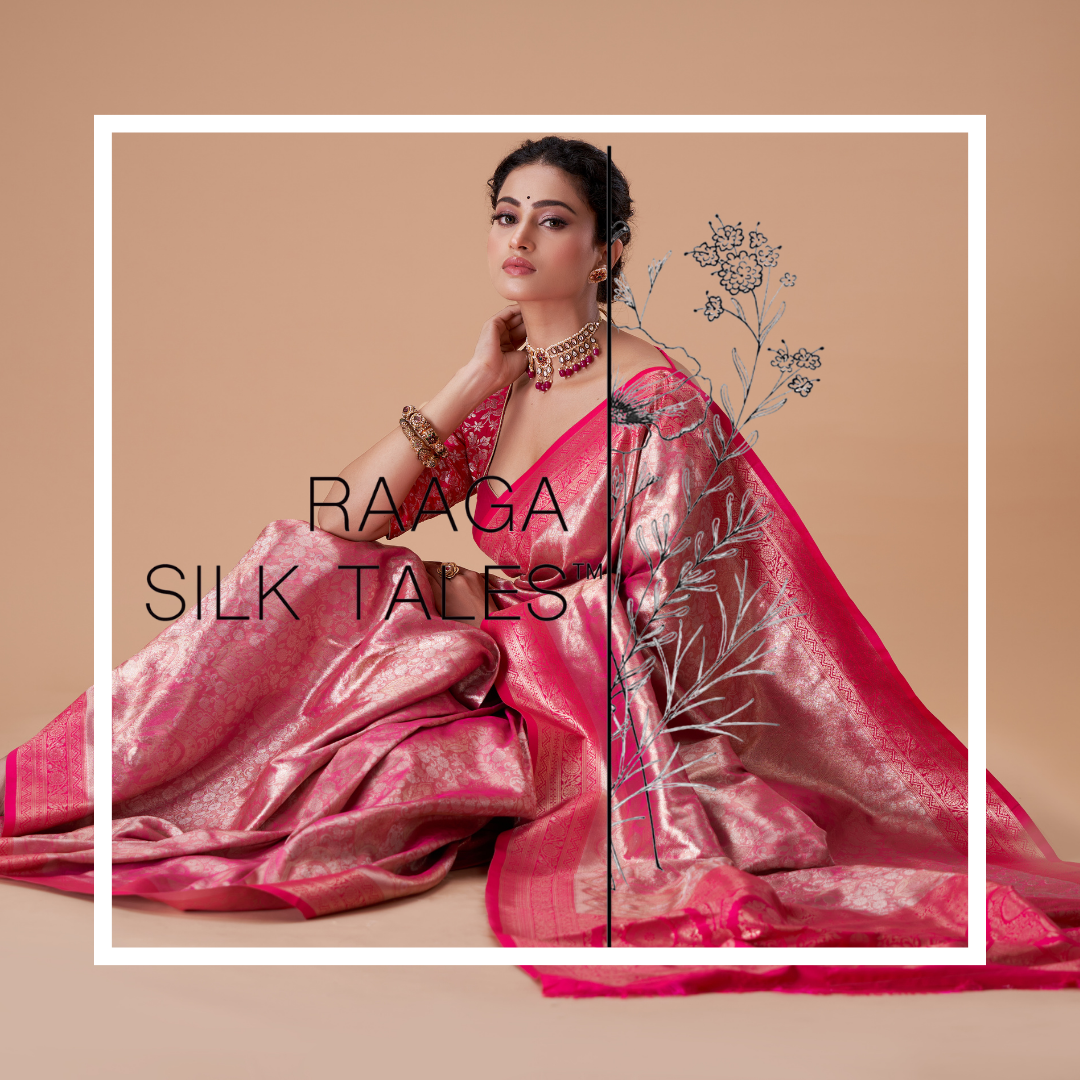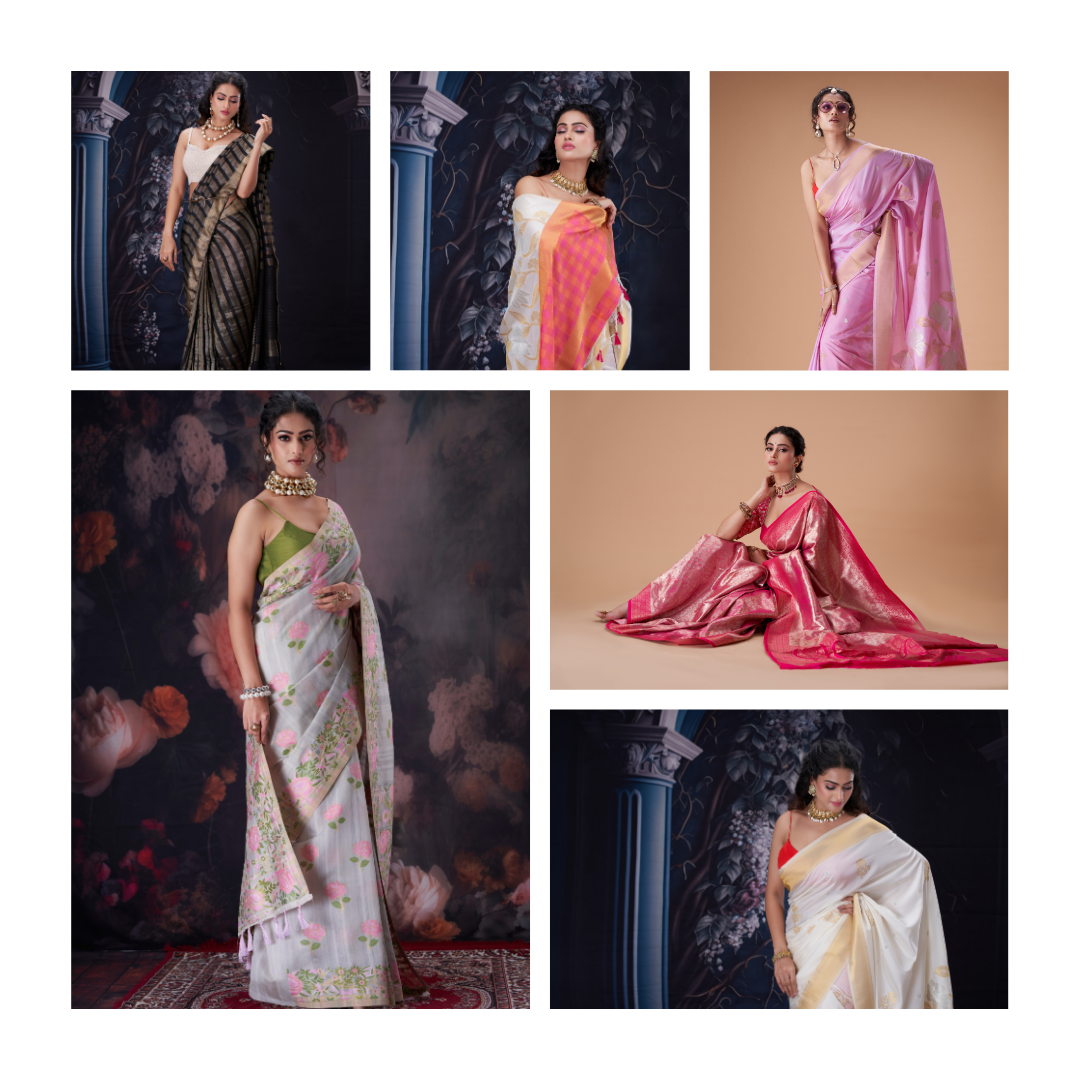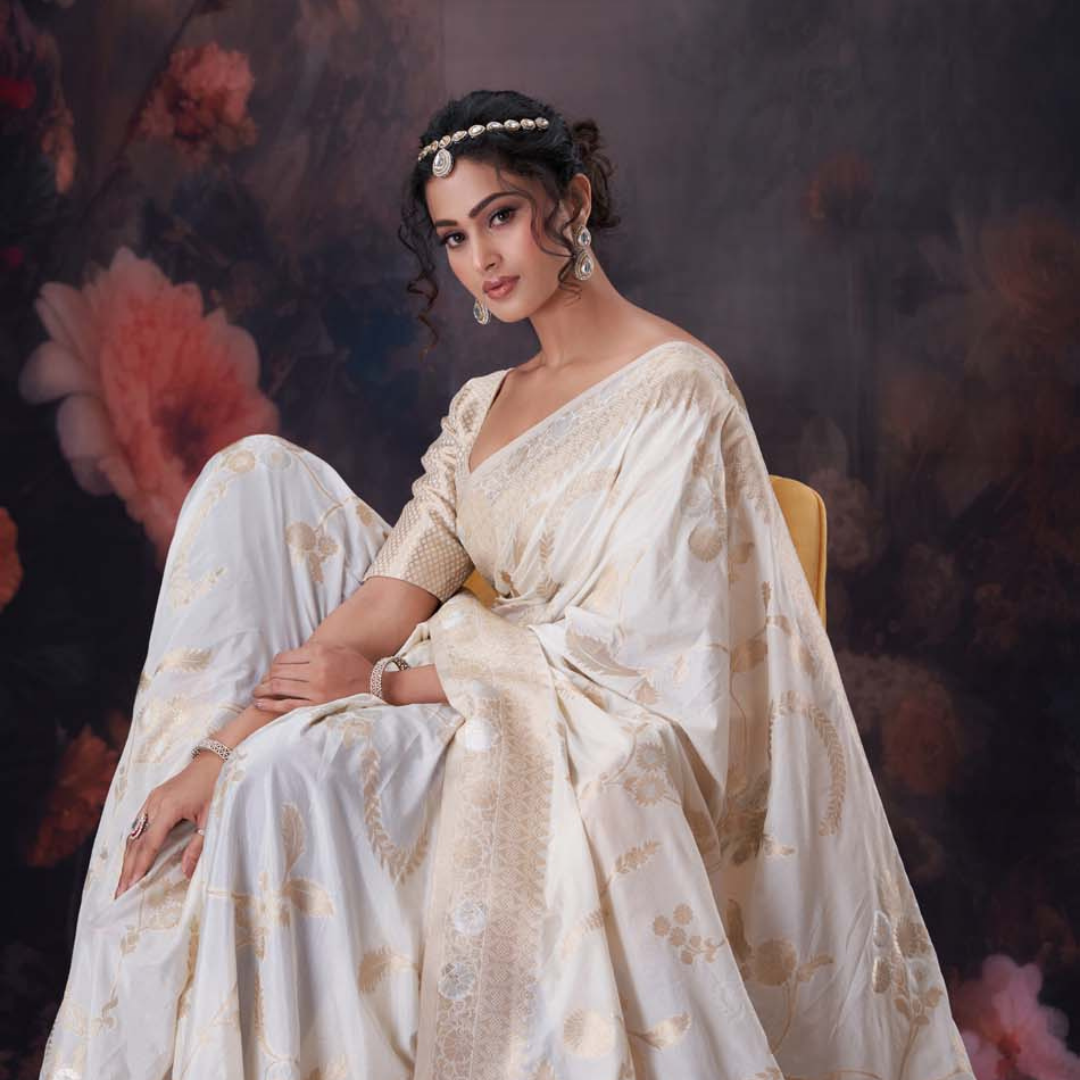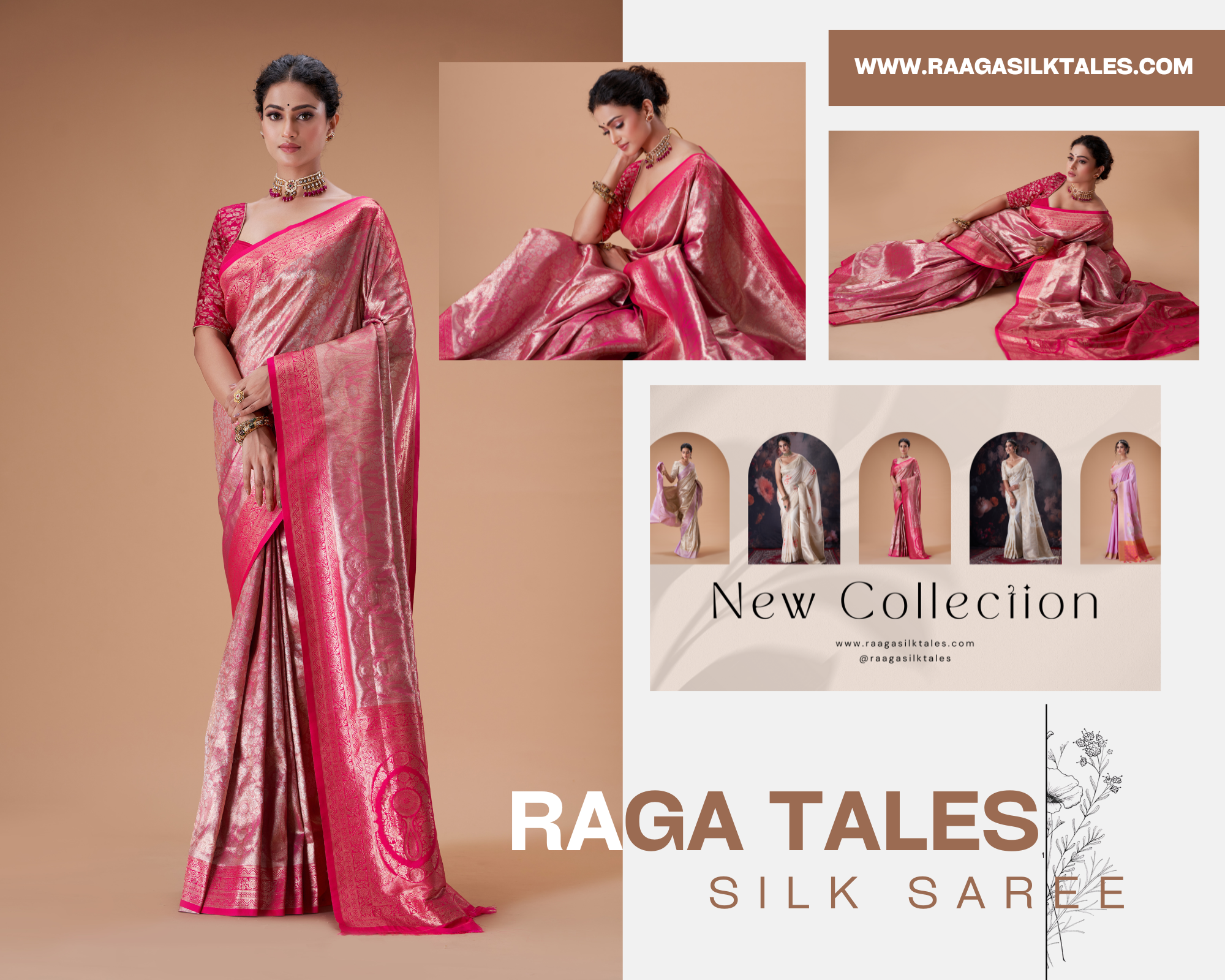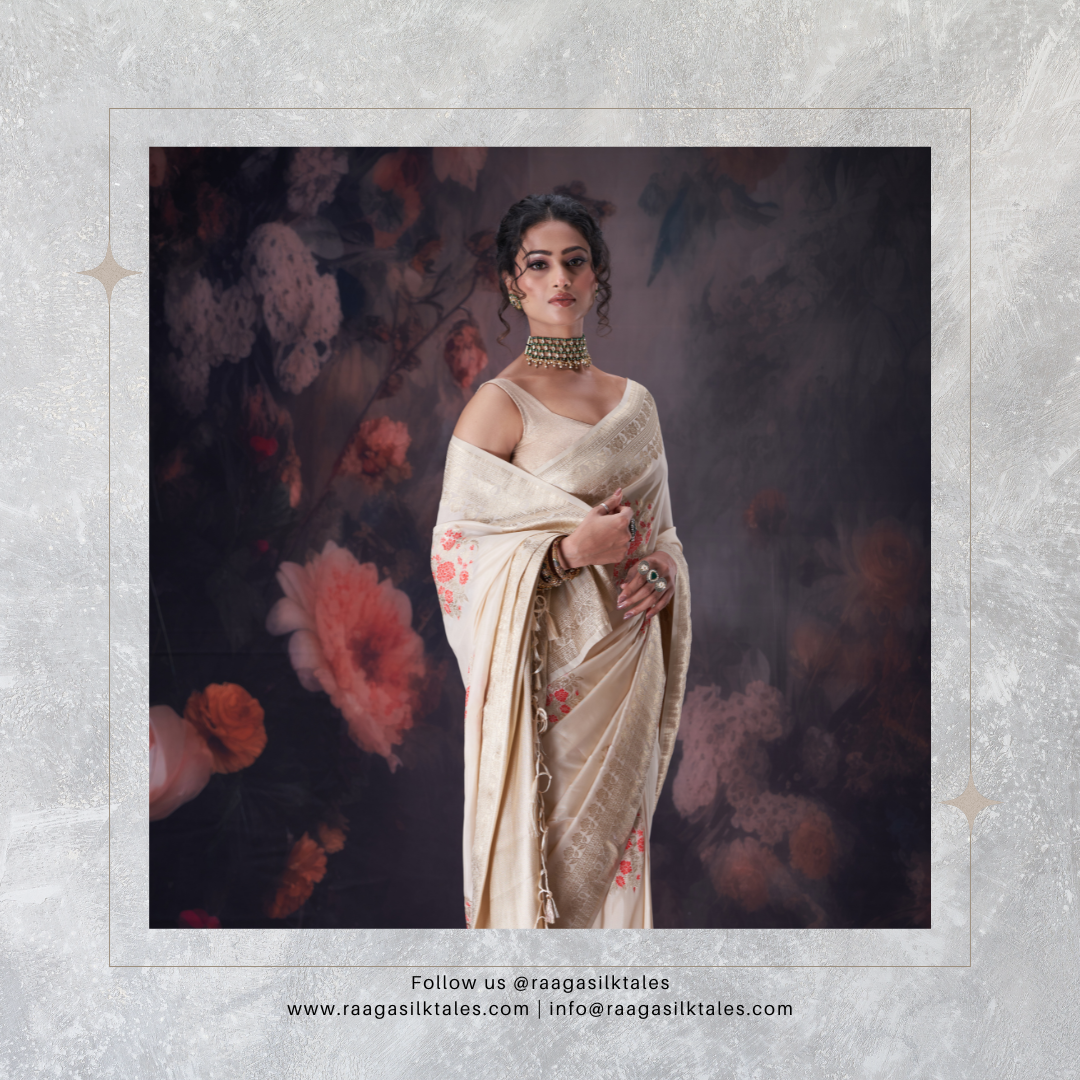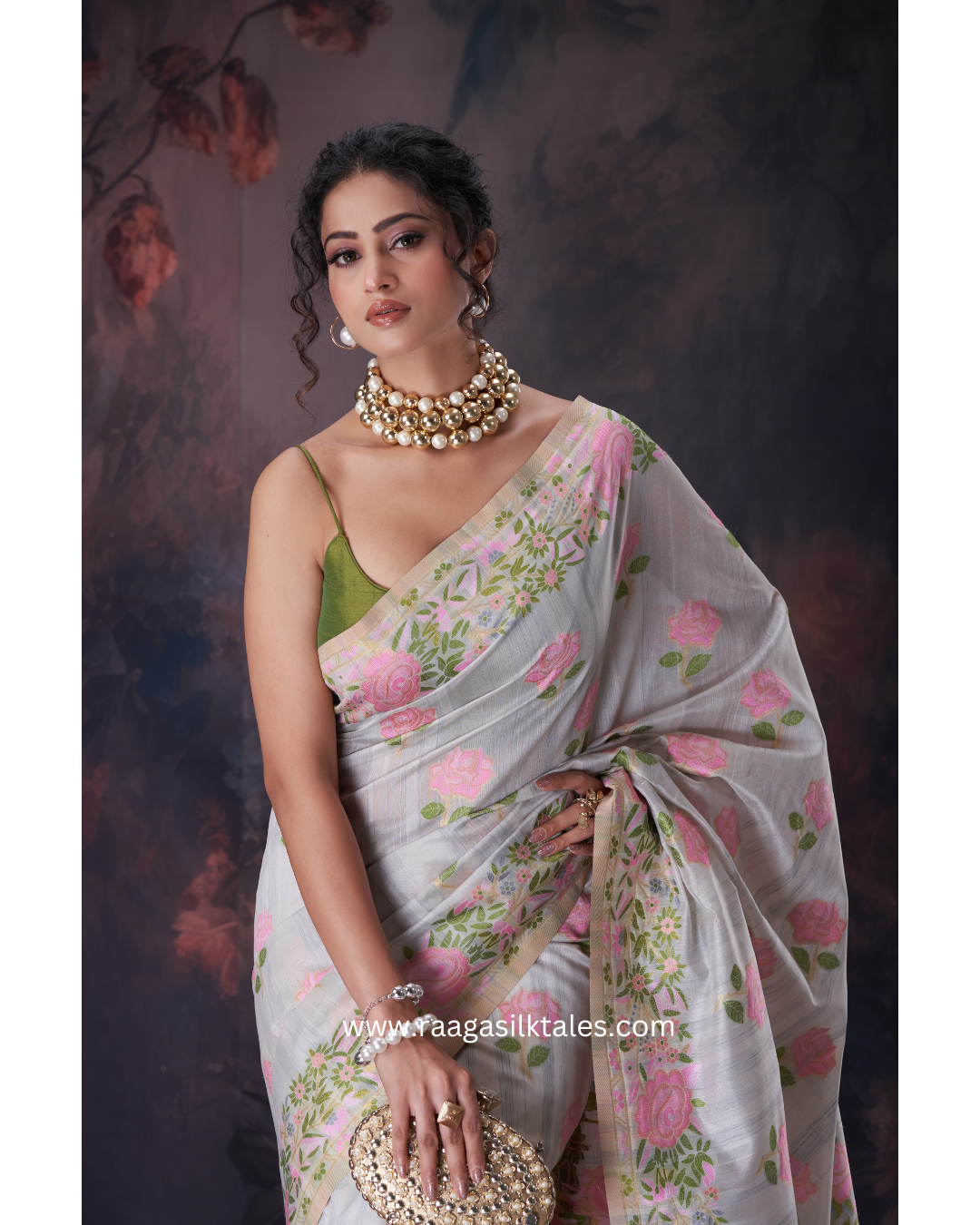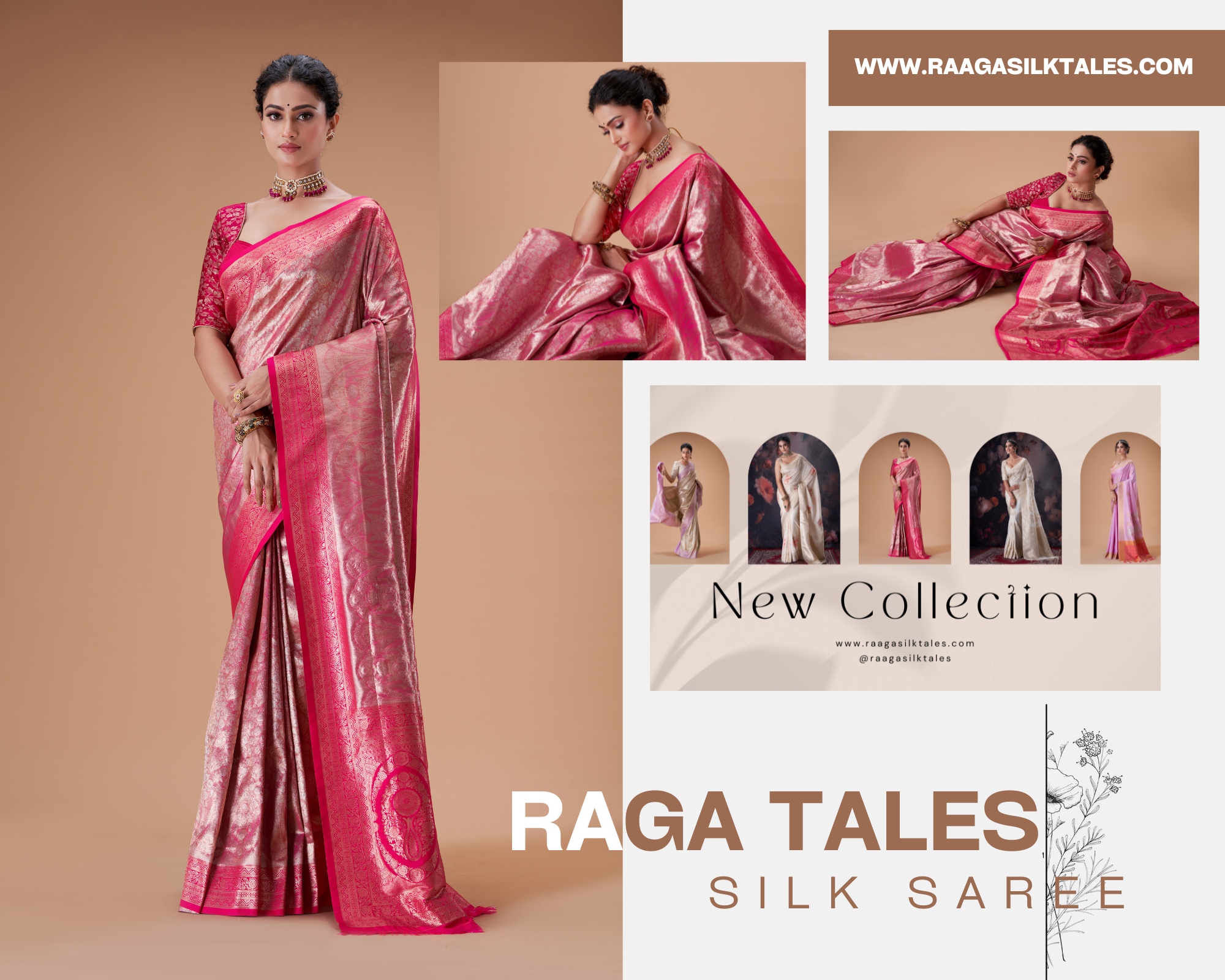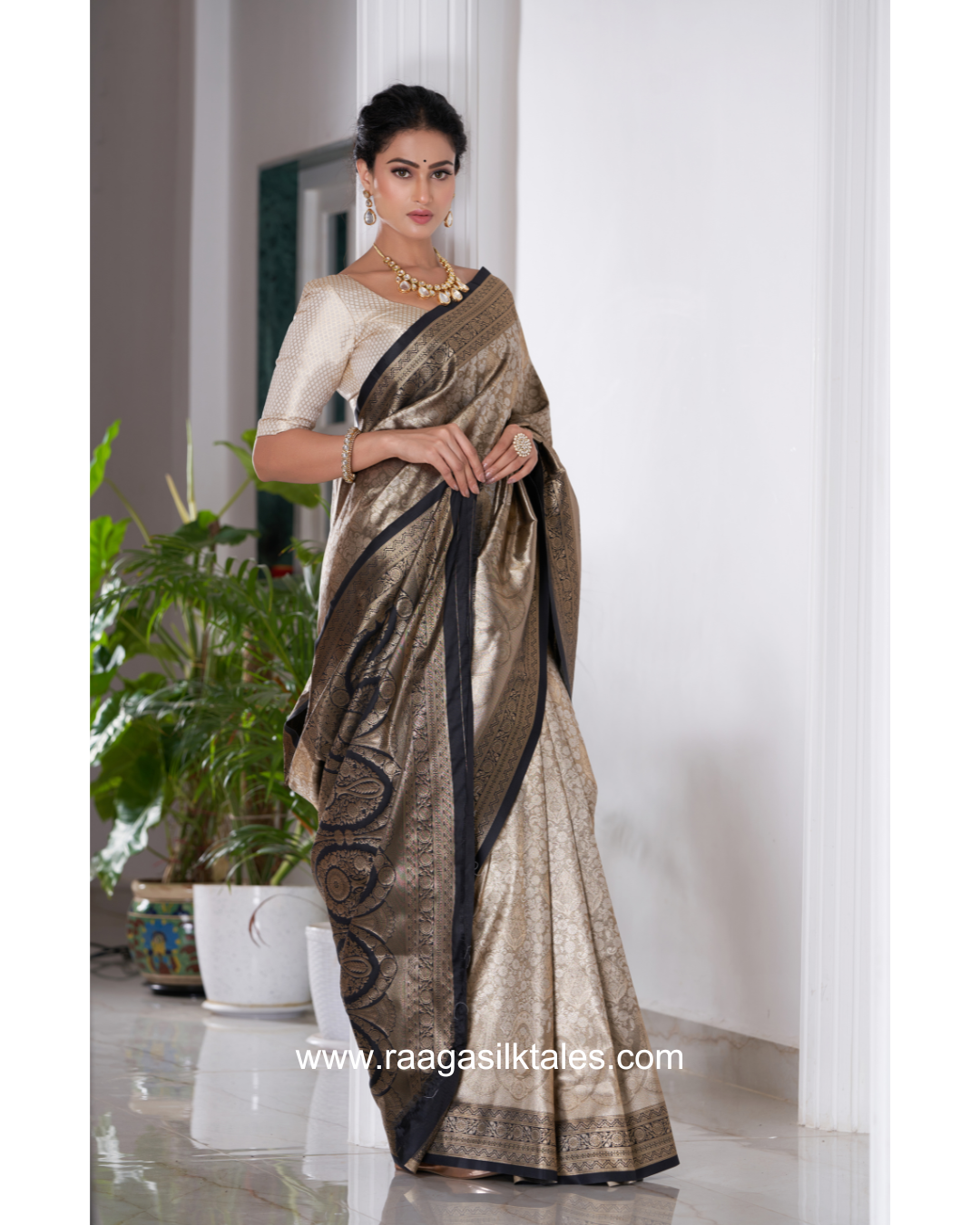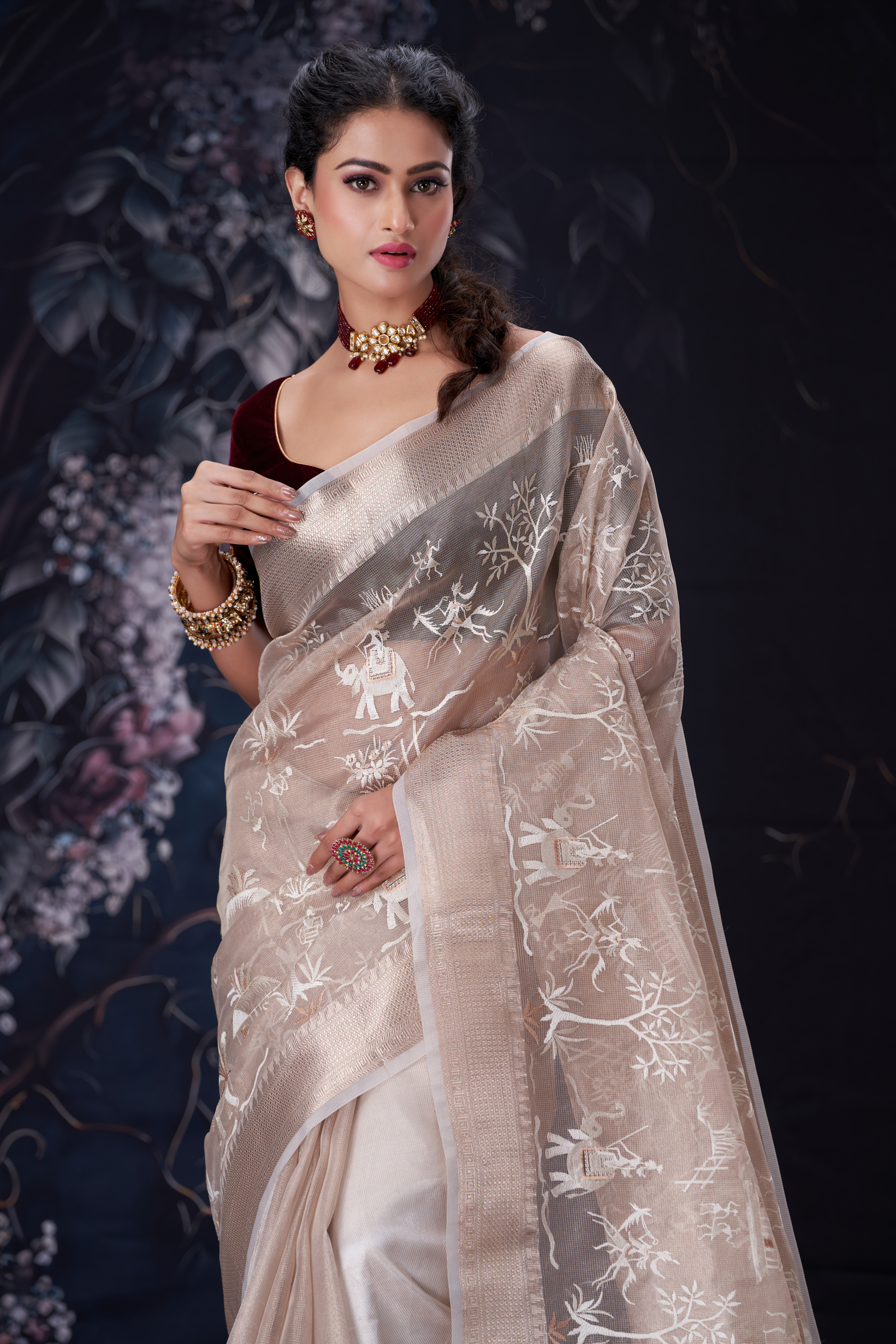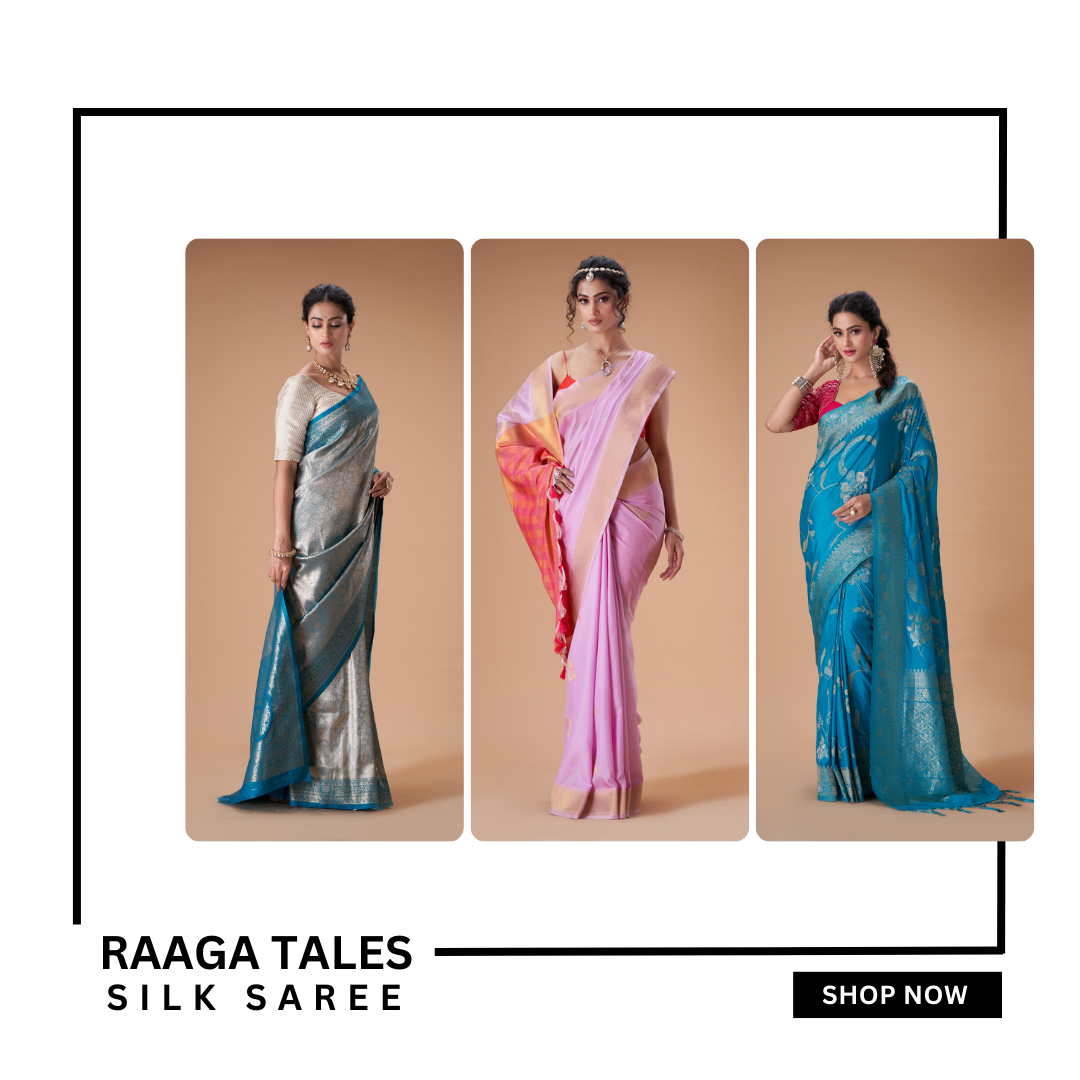
India is a land of diverse cultures, each with its own unique artistic expression. Among these, sarees stand out as an iconic symbol of tradition, with each region of India producing sarees that reflect its rich heritage, craftsmanship, and storytelling. Let’s embark on a journey through India’s regional saree weaves and discover the stories behind these timeless creations.
1. Banarasi Silk (Uttar Pradesh)
Known for its luxurious silk and intricate gold and silver brocade, the Banarasi saree is often a part of every Indian bride's trousseau. Woven in the holy city of Varanasi, these sarees reflect the regal elegance of Mughal designs. The motifs, such as intricate florals, animals, and geometric patterns, were inspired by the Mughal courts and have been passed down through generations. Each Banarasi saree can take weeks or even months to complete, depending on the complexity of the design, making it a prized possession.
2. Kanjeevaram Silk (Tamil Nadu)
Hailing from the temple town of Kanchipuram, the Kanjeevaram saree is synonymous with South Indian weddings and festivals. Crafted from pure mulberry silk and known for its thick gold borders and pallu, these sarees often depict traditional motifs like temple towers, peacocks, and floral patterns. The weavers are highly skilled, using interlocked weft techniques that ensure durability and strength. A Kanjeevaram saree is not just attire, it’s an heirloom passed down through generations.
3. Patola Saree (Gujarat)
The double ikat Patola sarees from Patan, Gujarat, are a marvel of hand-weaving techniques. Crafted meticulously by weavers over a period of months, the intricate patterns and vibrant colors symbolize royalty and religious significance. Patola sarees are often adorned with motifs like elephants, parrots, and geometric shapes, each having a symbolic meaning. Traditionally worn by royalty, these sarees are now coveted by women across India for their exquisite craftsmanship and uniqueness.
4. Chanderi Saree (Madhya Pradesh)
Chanderi sarees are known for their lightweight texture and sheer elegance. The art of Chanderi weaving dates back to the Vedic period and is practiced in the small town of Chanderi, Madhya Pradesh. These sarees are typically woven from a blend of silk and cotton and are famous for their translucency and intricate zari work. The motifs, often inspired by nature, such as peacocks, flowers, and traditional coins, give the saree a delicate and graceful appeal.
5. Tant Saree (West Bengal)
Tant sarees from Bengal are perfect for the hot and humid climate of the region. These cotton sarees are light, airy, and easy to drape. The weavers of Bengal create intricate motifs such as paisleys, florals, and abstract patterns using fine threads. Traditionally worn by Bengali women for everyday wear, the Tant saree is a symbol of simplicity and elegance. During the Durga Puja festival, the iconic white-and-red-bordered Tant saree is a popular choice for celebration.
6. Pochampally Ikat (Telangana)
The Pochampally Ikat saree from the Bhoodan Pochampally village in Telangana is renowned for its geometric patterns and vibrant colors. The unique process of Ikat weaving involves dyeing the yarns before they are woven into the fabric, creating intricate and colorful designs. The craft is deeply rooted in tradition, and the sarees often feature bold patterns, such as diamonds, squares, and checks. These sarees have earned a reputation for their striking beauty and precision.
7. Kasavu Saree (Kerala)
The Kasavu saree, also known as the Kerala saree, is an integral part of the state's cultural heritage. Traditionally worn during festivals like Onam and Vishu, these white or cream-colored sarees are made of cotton and have a distinctive golden border. The simplicity of the Kasavu saree, paired with its royal gold accents, makes it both elegant and auspicious. These sarees are symbolic of purity and are often passed down as family heirlooms.
8. Paithani Saree (Maharashtra)
The Paithani saree, known as the "Queen of Silks," is a handwoven marvel from Maharashtra. Made from silk and known for its vibrant colors and intricate motifs, Paithani sarees are often decorated with peacocks, parrots, and lotuses. The distinctive pallu (end piece) of the Paithani saree is where the artistry truly shines, featuring detailed weaving techniques that can take months to complete. These sarees were once reserved for royalty and continue to be cherished for their beauty and craftsmanship.
9. Baluchari Saree (West Bengal)
The Baluchari saree from Murshidabad, West Bengal, is known for its elaborate pallu that often depicts mythological scenes from the Ramayana or Mahabharata. Woven with pure silk threads, these sarees are unique in their storytelling. Each pallu serves as a canvas for intricate designs and motifs, making the Baluchari saree not just a garment, but a work of art that narrates age-old tales from Indian mythology.
10. Muga Silk Saree (Assam)
Muga silk sarees are made from the rare and prized Muga silk, indigenous to Assam. These sarees have a natural golden sheen and are incredibly durable, often lasting for decades. Muga silk was once reserved for royalty, and even today, the saree is considered a status symbol. The intricate motifs often represent the natural beauty of Assam, with designs inspired by flora, fauna, and Assamese culture


